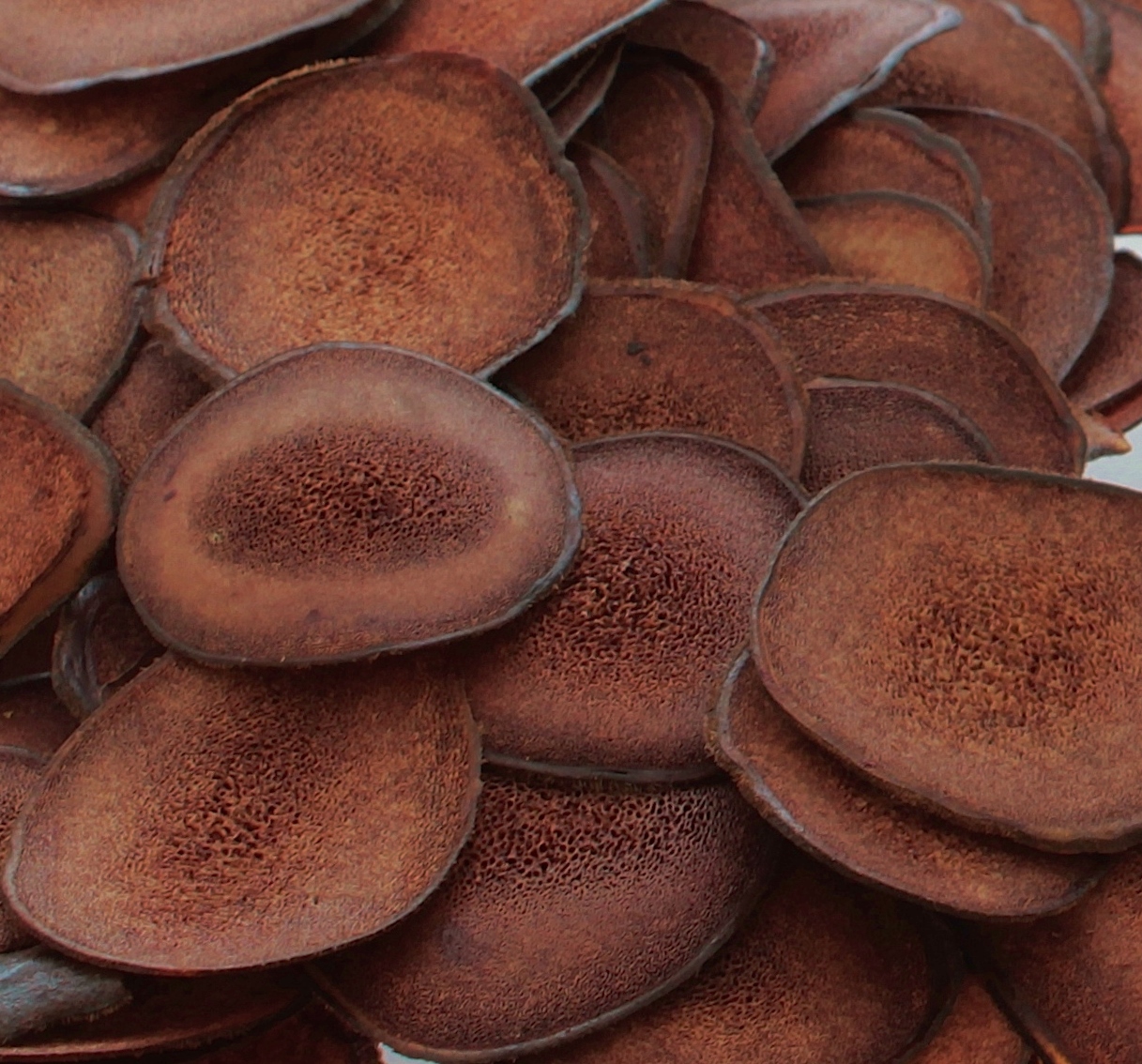Welcome to Dried Seafood Market, a world steeped in authenticity that engages all your senses. Be captivated by the rhythmic clicking of abacus beads, the earthy fragrance of herbs wafting through the air, and the charming sight of sundried treasures neatly arranged in baskets and boxes on the pavements. Still have no idea about Chinese herbal medicine? Don't worry, here we introduce some typical Chinese herbal medicine fothat able to be found in Dried Seafood Market for you.
.JPG)
Ginseng
Ginseng (人參), a fascinating root originating from the Panax plant genus, boasts varieties such as Korean, South China, and American ginseng. Distinguished by its unique properties, ginsenosides and gintonin, this root has become a cornerstone in the culinary and medicinal traditions of China and Korea. The use of ginseng as a healing herb dates back to the Shen Nong Pharmacopoeia (神農本草經), a landmark text penned in China in 196 AD. Later, in his renowned 1596 herbal guide, the Compendium of Materia Medica (本草綱目), Li Shizhen (李時珍) hailed ginseng as an "exalted tonic". Contrary to the common perception of a "cure-all" remedy, ginseng was traditionally utilized as a restorative tonic for those battling chronic ailments or on the road to recovery post-illness. This powerful root has thus carved out a significant place in historical and contemporary health practices.
.png)
Deer Antler
Velvet antler (鹿茸) refers to the soft, calcified antlers of deer species, like elk, moose, and caribou, all part of the Cervidae family. This antler stage, characterized by a velvet-like "skin" and rounded tines, indicates that the antler is still growing and has yet to harden or fully develop. In Asian cultures, velvet antler is often processed into a dried form, either as slices or powder. This versatile ingredient is typically combined with various herbs and other components, then boiled in water to produce a medicinal soup. While there's no universal standard for its categorization, the antler is typically divided into three sections: the wax piece (蠟片), the blood piece (血片), and the bone piece (角片). Each part is believed to address specific health needs. For example, the wax piece, usually the tip of the antler, is often marketed as a growth tonic for children. The blood piece, found in the middle, is associated with promoting joint and bone health. Lastly, the bone piece, or the bottom part, is thought to help with calcium deficiency and the health needs of the elderly.

Turtle Shell
Turtle shell (龜板), is a staple ingredient in traditional Chinese medicine and a key component in a cherished dessert, turtle jelly (龜苓膏). It is characterized by its cool, sweet nature. The jelly is renowned for its health benefits such as nourishing the kidney Yin, supplementing the kidney, boosting white blood cell count, and enhancing immunity. You can find many herbal tea shops in the Sai Ying Pun neighborhood offering this nourishing treat. Pop into one of these shops to savor a bowl of tortoise jelly (龜苓膏) and a cup of herbal tea - it's a wellness experience like no other!
.png)
.png)
Last but not the least, if you want to buy some Chinese herbal medicine, it is important to know traditional Chinese measurement system, "斤" and "兩", which are units of weight that have been used for centuries to measure herbs and other medicinal ingredients.
"斤" (pronounce as "gaan"), also known as Catty, is equivalent to about 600 grams or 0.6 kilograms.
"兩" (pronounce as "leung"), also known as Tael, is a smaller measurement. There are 16 tael in one catty or equivalent to about 37 grams.
So, when you come across these terms in the context of Chinese medicine, remember that they're just units of weight used to ensure the correct dosages of various herbs and ingredients. Make sure you don't mix up the weight units when purchasing, or it may make you bankrupt.









